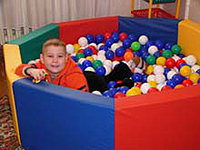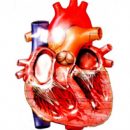What is poliomyelitis? How the disease occurs? What is the diagnosis of polio? Answers to these questions you will find in the article.
Content
What is poliomyelitis
Polio (from Grech. Polios - «grey», gray and spinal cord-related substance; from Grech. Myelos - «spinal cord») - This is a severe infectious disease that cause polio viruses 1, 2, 3 types. Characterized by the damage to the nervous system (mainly gray of the spinal cord), which leads to paralymps, as well as inflammatory changes in the intestinal mucosa and nasopharynx «Mask» Orz or intestinal infection.
Epidemic flashes are most often associated with type 1 polyomelitis virus.
Poliomyelitis epidemics have noted throughout the history of mankind. In the 50s of the 20th century, two American scientists - Sabin and Slet, for the first time, managed to create vaccines from this disease. The first researcher suggested that the means containing weakened live viruses of polio, the second - developed a vaccine from the death viruses.
Thanks to vaccination, a dangerous disease was able to defeat. However, in some regions of the world in nature, so-called wild viruses of poliomyelitis are still circulating, and unmet people can get sick.
The disease is transmitted from a person to a person when talking, sneezing or through contaminated items, food, water. The source of infection is a sick person. Due to high infinity, the infection quickly applies, but the suspicion that the flash of polio began, when the first case is noted by paralysis.
The incubation period of the disease (from the moment of infection until the appearance of the first symptoms) lasts 7-14 days (may fluctuate from 3 to 35 days). Viruses enter the body through the mucous membranes of the nasopharynk or intestines, multiply there, then penetrate into the blood and reach the nerve cells of the head, but most often, spinal cord, and destroy them. This determines the appearance of paralysis.
How polio flows
Vironessiance. If the virus does not go beyond the nasopharynx and intestines, then the clinically disease does not appear in an infected person. However, the infected itself is a source of infection for others.
 Nonparalithic forms. This is a relatively favorable disease of the disease.
Nonparalithic forms. This is a relatively favorable disease of the disease.
If the virus manages to penetrate the blood, the disease proceeds as an ARZ (with fever, malaise, runny nose, pain and redness in the throat, disruption of appetite) or an acute intestinal infection (with a rapidly liquefied chair).
Another form - the occurrence of serous meningitis (lesions of the shells of the brain). Fever appears, headache, vomiting, the tension of the muscles of the neck, as a result of which it is impossible to bring the chin to the chest (symptoms indicating the involvement of brain shells into the inflammatory process), twitching and muscle pain.
Paralytic form. This is the hardest manifestation of polio. The disease in this case begins acutely, with high temperature, malaise, refusal of food, in half cases there are symptoms of the lesion of the upper respiratory tract (cough, runny nose) and intestines (liquid chair), and after 1-3 days, symptoms of the nervous system lesions are attached ( Headache, pain in the limbs, back). Patients Sonline, reluctantly change the position of the body due to pain, they have muscle twitching. This is a preparaltic period that lasts 1-6 days. Then the temperature is reduced, and paralysis develops. It happens very quickly, within 1-3 days or even several hours. One limb can be paralyzed, but hands and legs are immobilized significantly. The lesions of the respiratory muscles are also possible, which leads to a violation of breathing. In rare cases, paralysis of face muscles occur. The paralytic period lasts up to 2 weeks, and then the recovery period is gradually beginning, which lasts until 1 year.
In most cases, complete recovery does not occur, the limb remains shortened, atrophy (fabric disorder) is preserved and the change in the muscles,
It is worth noting that paralysis arise only in 1% of the infected.
How to diagnose poliomyelitis
The diagnosis is established on the basis of the characteristic external manifestations of the disease and epidemiological prerequisites: for example, in the presence of infected or patients surrounded by the patient, as well as in the summer. The fact is that on hot days, people (and especially children) swims a lot, and the virus can be infected, tilting water from an open reservoir. In addition, diagnose poliomyelitis allow laboratory research data (for example, the release of a virus from the nasochloric mucus, feces and blood of a patient, a study of the spinal fluid). But these studies are expensive and are not held in every hospital, and even more so, the clinic. To carry out such analyzes, a network of centers for laboratory diagnostics of poliomyelitis, which is delivered to study the material from the patient.









